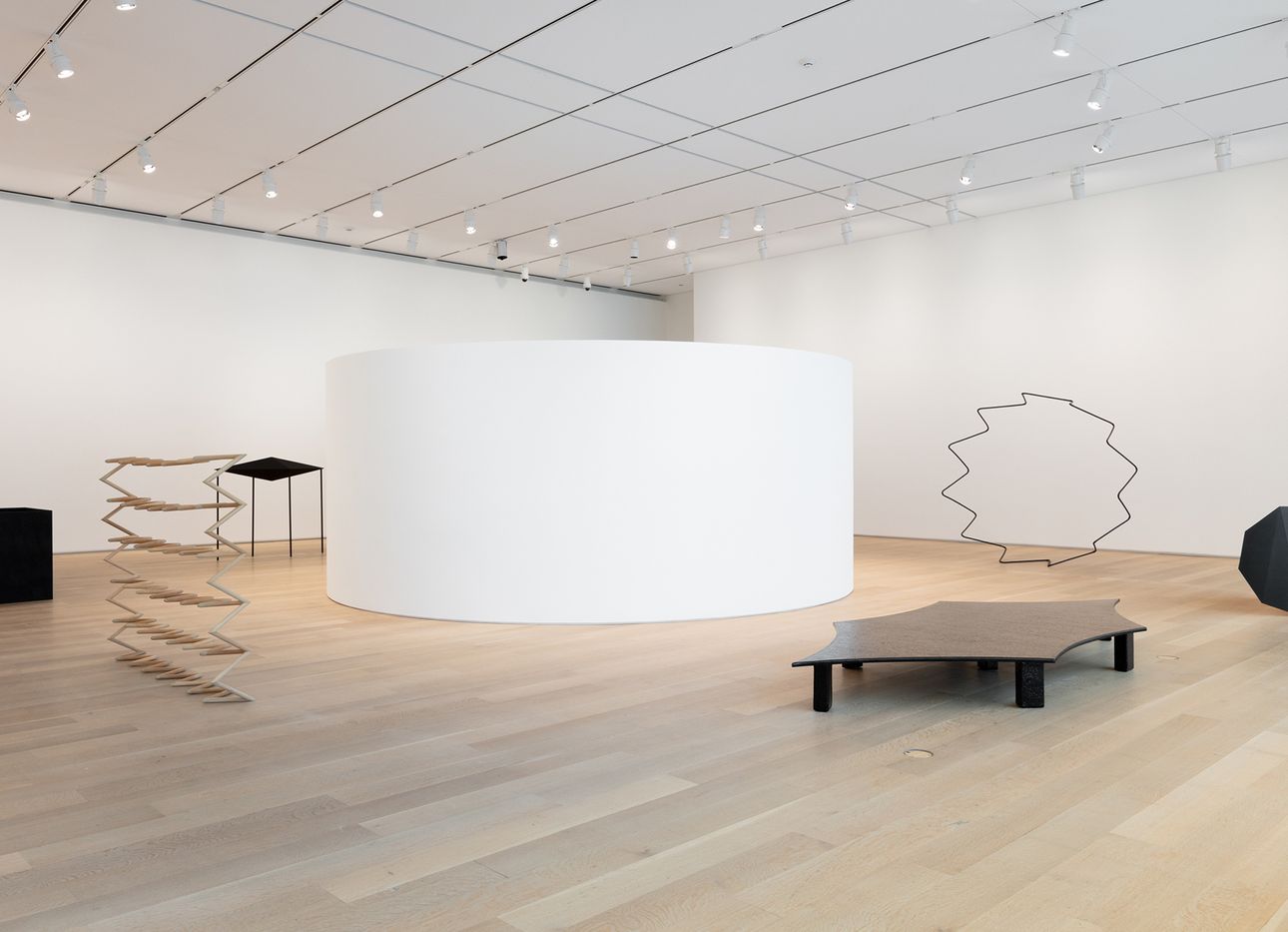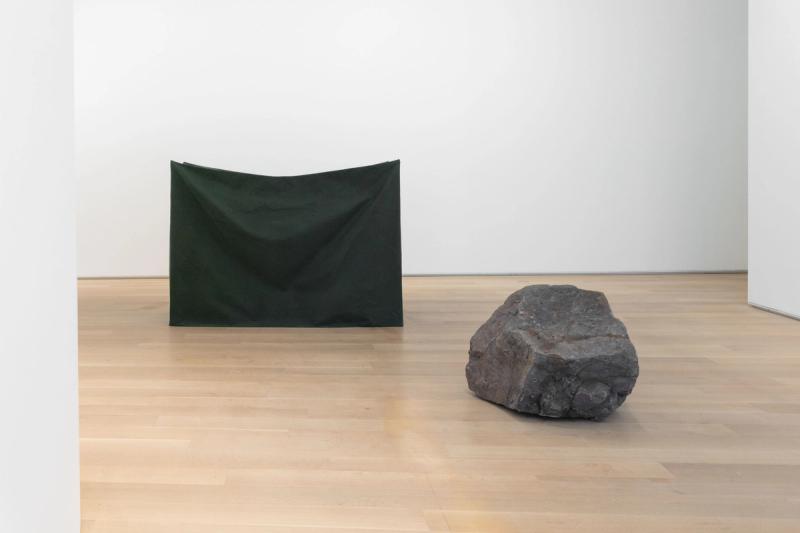
With His “Open Objects,” Jonathan Muecke Wants You to Think About Space
“What is the texture of scale? Can a surface be eliminated? Can space expand?” Viewers encounter these and other questions, which are printed on a wall, upon encountering the Art Institute of Chicago’s exhibition “Objects in Sculpture” (through Oct. 10), Minnesota-based designer Jonathan Muecke’s first solo presentation in a major museum. For Muecke, a graduate of the Cranbrook Academy of Art who has worked at the Swiss architecture firm Herzog & de Meuron, objects are vessels through which to explore the connections between spaces, materials, and perception. Through his output—pared-down pieces in evocative forms and tactile mediums—he encourages viewers to think about how objects can shape the ways we interact with our surroundings.
The fourth show in the institute’s Franke/Herro Design Series, a program that highlights the work of promising emerging talent, “Objects in Sculpture” presents eight key pieces from Muecke’s oeuvre situated around a large, white cylindrical volume, much like planets orbiting the sun. This neutral and monumental centerpiece, juxtaposed with the distinctly smaller works on display, underscores each sculpture’s formal qualities in relation to its environment.
The pieces, which Muecke calls “open objects,” flaunt qualities both familiar and strange: In “Rock with Holes” (2021), tiny apertures punctuate a boulder, revealing its sheer mass; “Scrambler” (2009), with its tiered, poplar wood zig-zags, evokes a clothes-drying rack, but has no obvious top or bottom. Like all of the works, the functionality of “Concave Textile Shape” (2019), a depressed canvas sheet supported by a carbon-tube frame, is entirely unclear. Devoid of superfluous details, the richness of each item’s noble materials shines through, creating a tangible presence. While the works borrow references from furniture design, architecture, and material culture, their primary function is apparently concerned with defining negative and positive space.
The ideas behind Muecke’s work might sound a bit heady, but interacting with the objects in person can be an approachable, deeply visceral experience: The usual forms and materials entice the eye and the hand, challenging perspectives of how physical entities—including ourselves—take up and impact the spaces they inhabit.


